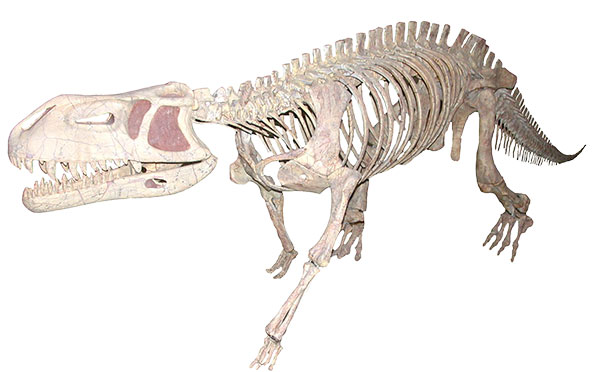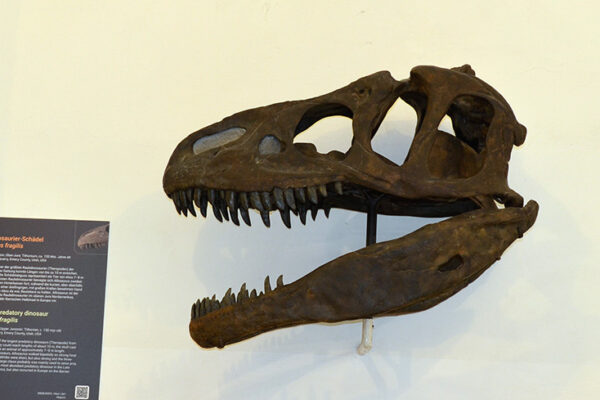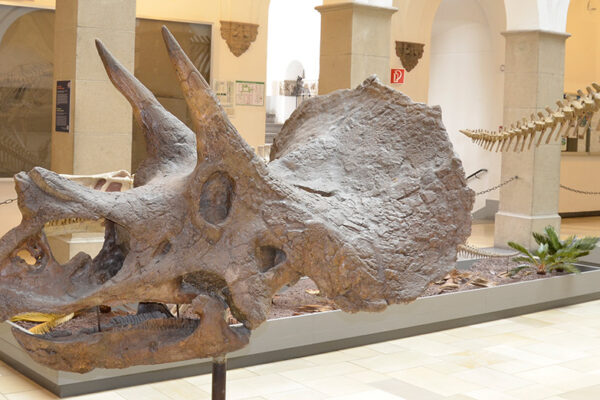Pseudo-Crocodile
Prestosuchus chiniquensis

Santa Maria-Formation, Middle Triassic: Ladinium,
approx. 238 Mio. years old
Near Santa Maria, Rio Grande do Sul, Brazil
Prestosuchus is also a representative of the archosaurs (“ruling reptiles”) and belongs to the evolutionary line that leads to today’s crocodiles. The pseudo-crocodiles, such as Prestosuchus, were the major predators on all continents in the Middle and Upper Triassic. Unlike today’s crocodiles, their skulls were high and narrow and their legs were slender and placed vertically under their bodies. Thus, these animals were not mostly aquatic lurking hunters, like our modern crocodiles, but were more like today’s lions or tigers as large land predators that killed their prey with their powerful jaws.
Towards the end of the Triassic, these animals became extinct and their ecological role was taken over by the large predatory dinosaurs from the Jurassic period onwards.
SNSB-BSPG AS XXV 1-3, 5-11, 28-41, 49
Cast and reconstruction






